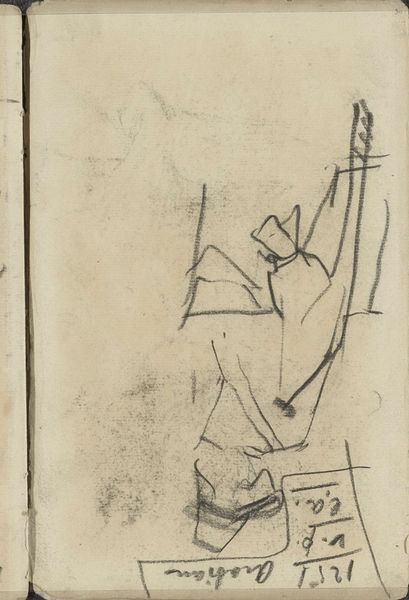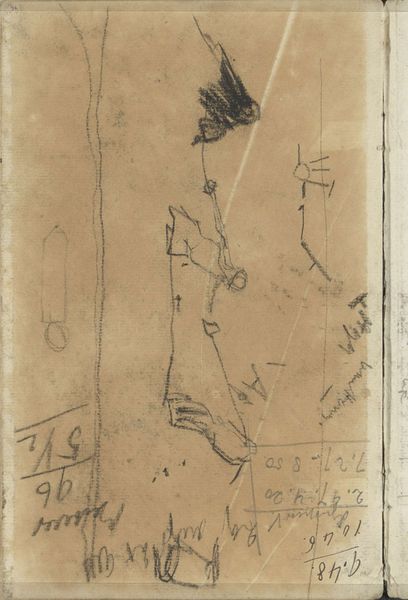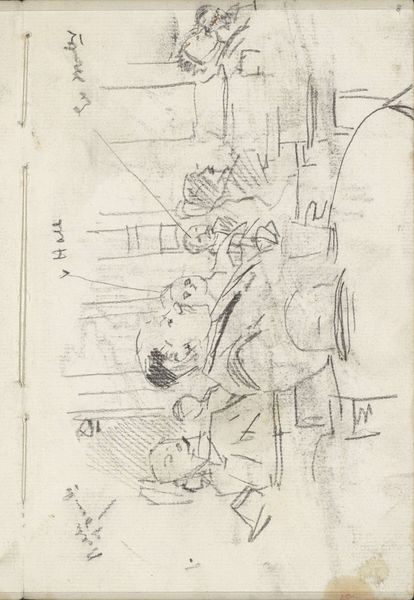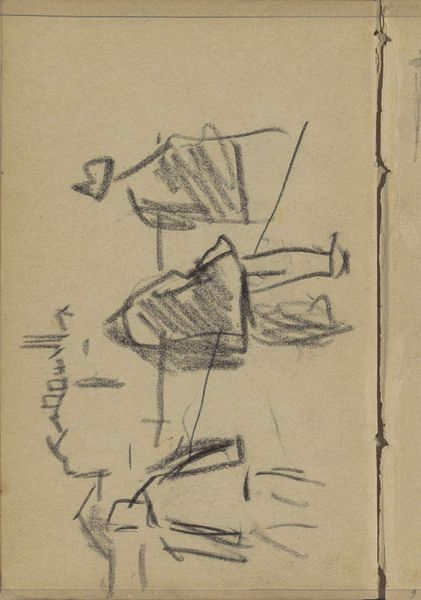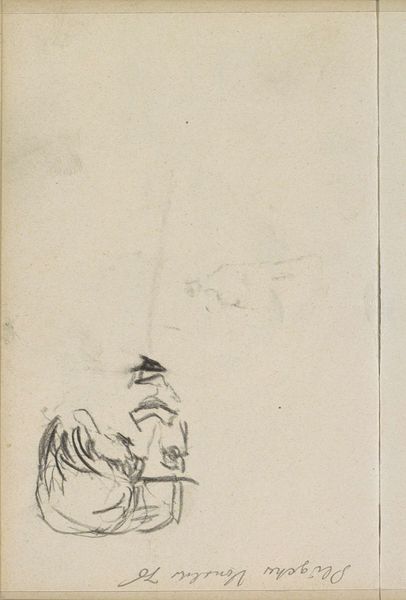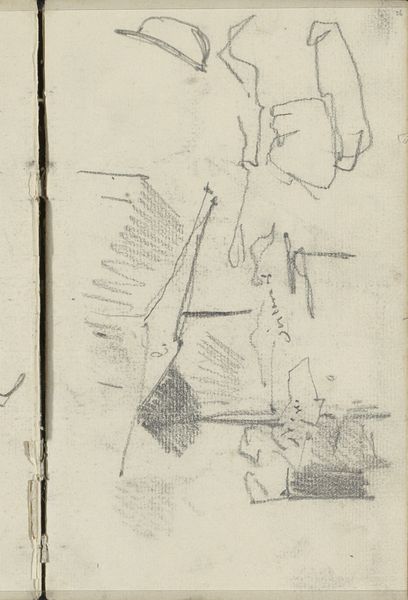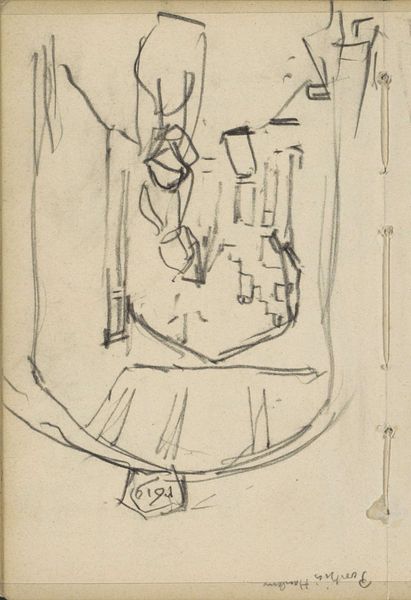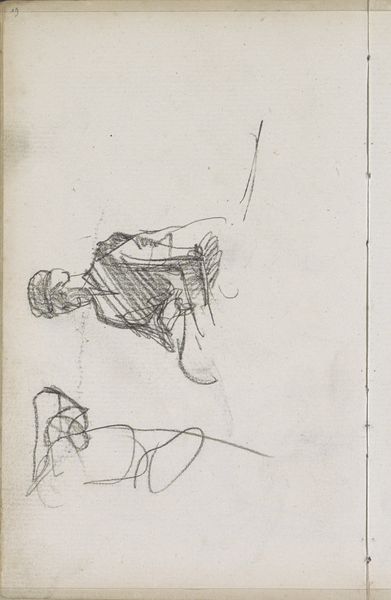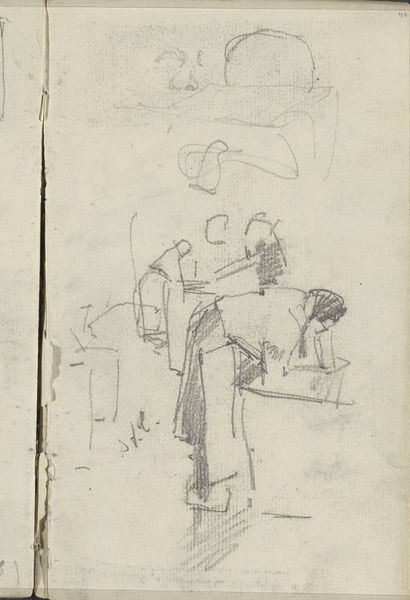
drawing, paper, pencil
#
portrait
#
drawing
#
impressionism
#
landscape
#
figuration
#
paper
#
child
#
pencil
#
genre-painting
Copyright: Rijks Museum: Open Domain
Editor: This is "Studieblad met vrouwen en kinderen," a pencil drawing on paper by George Hendrik Breitner, created between 1880 and 1882. I am really intrigued by the almost ephemeral quality of the figures; they are mere suggestions of people. What do you see in this piece? Curator: Indeed, the power of this work resides in its simplicity. Consider the artist’s use of line; it is economical, yet descriptive. Breitner’s strategic deployment of hatching and cross-hatching generates subtle gradations of tone, thus implying form without laboring over detail. Observe how negative space contributes to the overall composition, lending the figures an air of transience. Editor: So you're saying the composition and the materials create this fleeting sense? Curator: Precisely. Furthermore, the restricted tonal palette enhances the drawing’s formal unity. Breitner masterfully exploits the intrinsic properties of the pencil to delineate figures and imbue the composition with dynamism. Do you discern any inherent structural relationships between the depicted forms? Editor: Now that you mention it, I see how the angle of the child figure mirrors the hat brim on the standing figure, linking the two...almost like echoes. Curator: An astute observation! Such formal echoes reinforce the cohesiveness of the composition, further solidifying it as a study in movement and perception. Editor: I didn’t notice that before, I was so caught up in what seemed to be missing! Now, the visible artistic choices really speak to me. Curator: Exactly. Sometimes it is the means themselves and how an artist chooses them that offers deeper meaning.
Comments
No comments
Be the first to comment and join the conversation on the ultimate creative platform.

